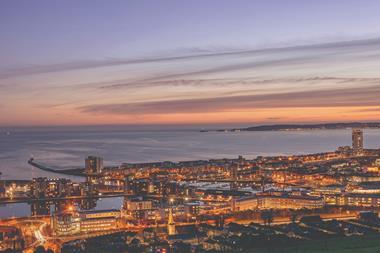Given the current economic uncertainty, counter cyclical asset classes that suffer lower volatility will hold a stronger appeal for investors. With low interest rates and unstable stock markets, we are already seeing more investors diversify portfolios to allocate more to real assets and build to rent is an appealing option, particularly to the institutional investor.

BTR fulfils the counter-cyclical, low volatility criteria with developments offering a stable long-term option that works well for pension funds and sovereign wealth funds who typically commit for at least ten years. It is likely that those who previously may have looked at hotels or retail, will consider BTR a much more attractive option in the current climate.
The appeal of BTR is perhaps further buoyed by the success of the private rented sector, currently the fastest growing part of the housing market with forecasts predicting that renters will outnumber homeowners in 20 years’ time. Buy-to-let landlords are however in decline, deterred by new restrictions on the tax relief for mortgage interest payments, the prospect of COVID-related rent arrears, and the proposed abolition of no-fault evictions. This is further increasing the scope for the build-to-rent (BTR) market, really only in its infancy in the UK. Proving this and the market’s potential, Savills research revealed BTR currently accounts for just 1% of all private rented homes in the UK, compared to 45% in the US and 35% in Germany.
We are already seeing strong growth in the UK BTR sector
Despite the government’s efforts to turn generation rent into generation buy, the pandemic has caused people to rethink their priorities. Many are moving out of London and are unsure about committing to debt in uncertain times. As such, we are seeing significant demand for high-quality rental stock in convenient locations in commuter zones and consequently build-to-rent developments are performing strongly in regional towns and cities.
I think the mentality is changing around wanting to own your own bricks and mortar and particularly in the current unstable economic climate. Build-to-rent properties are becoming an increasingly attractive option for families, young professionals and downsizers. Many developments provide popular amenities, such as pools, gyms, and communal areas which appeal to those looking for facilities, social opportunities and convenience without the burden of debt and maintenance.
In September this year ASK lent against a 1.2-acre site in Brighton where the borrower plans to build out and operate its first BTR scheme. The site is in a convenient location close to the train station and amenities and plans for 135 units and four townhouses also include: a residents’ lounge, communal landscaped roof terrace, gym and 181 cycle spaces. There are currently two other BTR schemes that have achieved planning in nearby locations with construction due to start next year and ASK has also agreed terms to fund another larger BTR scheme nearby.
The BTR model is attractive
The BTR model provides reliable long-term income streams and low volatility. Single-family housing for example has very low operating costs and tenant turnover. It is clearly not for those that want an immediate return, however, properties for sale will always be exposed to the risk of a market downturn whereas BTR can offer more stability and flexibility. Coupled with significant growth in PRS, this is creating a win-win in the current climate.
The outlook for BTR is positive
Now we’ve reached our second lockdown and despite recent positive news, still have no vaccine in circulation, it is clear that more unsettled times lie ahead. As a result, I think we will see property investors looking to diversify, shifting away from classes that are less likely to show resilience through the downturn and into BTR.
Despite the fact that housing shortages are more acute in London, we are already seeing a greater trend for BTR in regional locations. I expect this will persist given more viable land prices, less direct competition with the build to sell market, and more attractive entry yields. With a post-COVID movement out of the capital, I believe there will be sufficient demand from the right demographic, also looking to protect themselves from economic uncertainty. I’d expect to see an increase in single family occupancy and overall, I would certainly anticipate the BTR market seeing further sustained growth over the next 6-12 months.
Daniel Austin is Chief Executive and Co-founder of ASK Partners





























No comments yet